Picture this: You’re scrolling through your favorite blog, watching a YouTube review, or catching up on TikTok trends, and you spot a link or a discount code that seems tailor-made for you. Welcome to the world of affiliate marketing—where content, commerce, and clever partnerships collide. In 2026, affiliate marketing isn’t just a side hustle for bloggers or a sneaky way to get a few bucks off your next gadget. It’s a multi-billion-dollar industry, fueling everything from e-learning booms to viral beauty products, and it’s woven into the very fabric of how we shop online.
But with so much hype, the big question remains: Is affiliate marketing worth it in 2026? Whether you’re a brand, a marketer, a creator, or just data-curious, the latest affiliate marketing statistics offer a clear-eyed look at what’s working, what’s changing, and where the real money is flowing. I’ve dug deep into the freshest numbers, so let’s break down the stats that matter most—no fluff, just facts (and maybe a few fun surprises).
Affiliate Marketing Statistics at a Glance: 2026’s Must-Know Numbers
Let’s kick things off with a rapid-fire look at the headline stats that define affiliate marketing in 2026. If you’re wondering, “Is affiliate marketing worth it?” these numbers should help you decide:
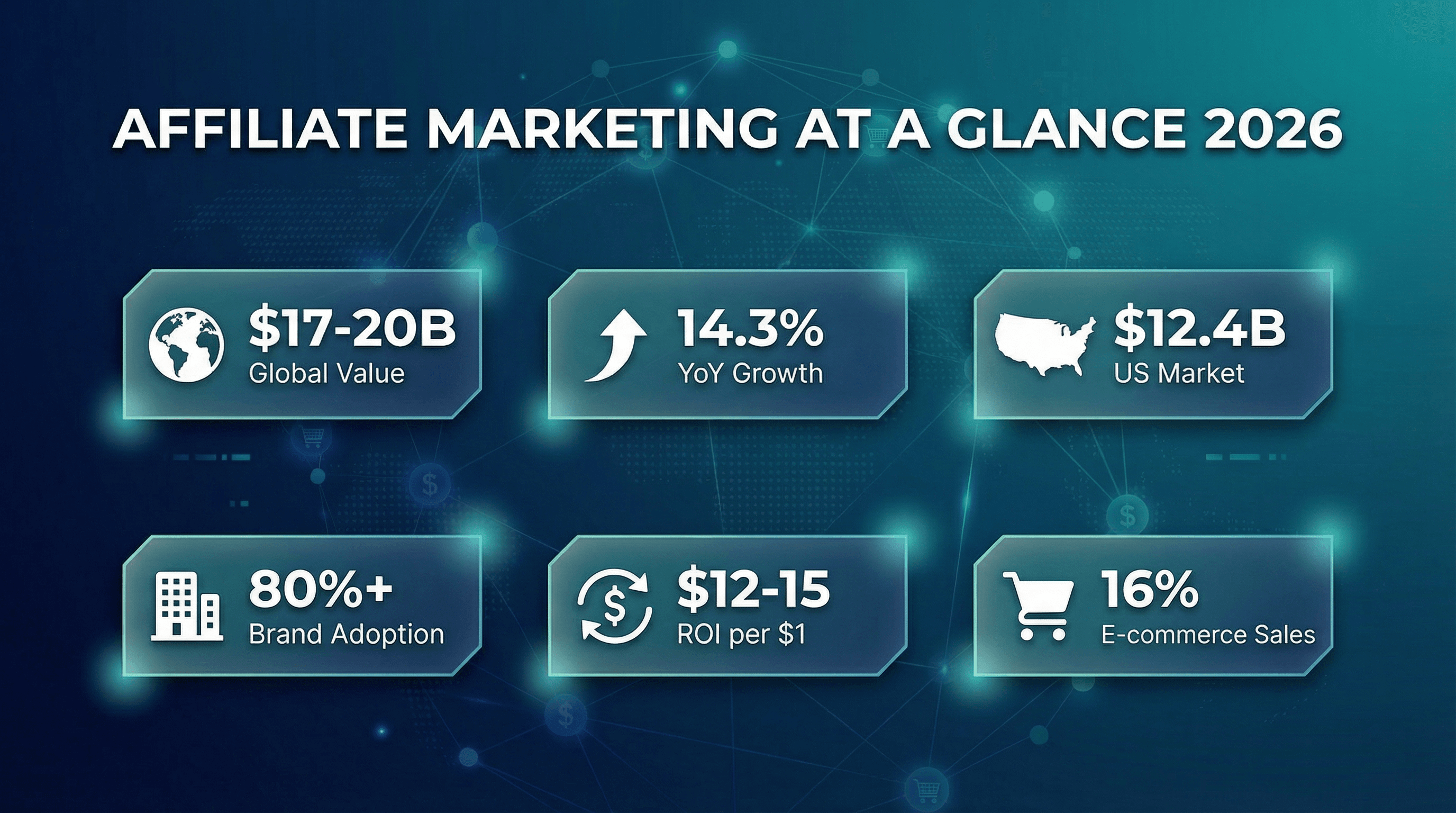
- Global industry value: Affiliate marketing is worth between worldwide in 2026, with forecasts pushing it to $27–28 billion by 2027.
- Annual growth: The industry is growing at a , outpacing many other digital marketing channels.
- US market size: US affiliate marketing spend will hit , up from $9.1B in 2023.
- Adoption rates: Over use affiliate marketing; are involved.
- Average ROI: Businesses earn on affiliate marketing.
- Share of e-commerce sales: in the US and Canada come from affiliate referrals.
- Top-earning niches: Education/e-learning affiliates average ; travel is close behind at $13,847/month.
- Mobile dominance: now happen on mobile devices.
- AI adoption: Nearly use AI tools for content, SEO, or campaign analysis.
- Income brackets: About ), but only 3% make $150,000+.
Feeling the FOMO yet? Let’s dig deeper into what these stats really mean for brands, marketers, and creators in 2026.
Affiliate Marketing Industry Growth: How Big Is It in 2026?
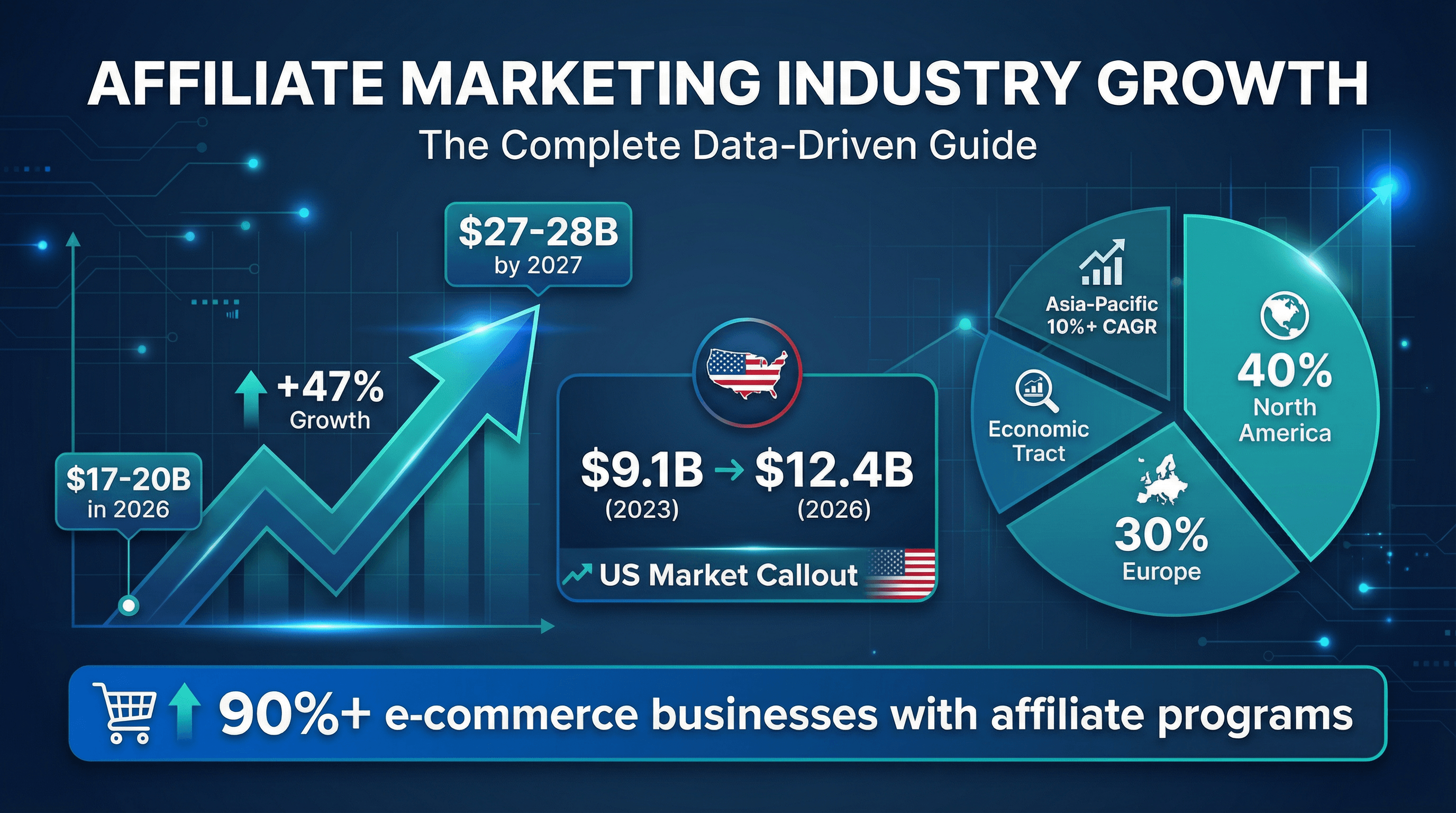
Affiliate marketing isn’t just “big”—it’s booming. The global industry is valued at in 2026, and it’s on track to nearly double by 2027, hitting $27–28 billion. That’s not just a lot of commission checks—it’s a sign that affiliate marketing is now a mainstream, high-budget channel, rivaling paid search and social in scale.
The US leads the charge, with affiliate spend reaching , up from $9.1B in 2023. North America accounts for over , with Europe at 30% and Asia-Pacific rapidly catching up at a 10%+ CAGR.
What’s fueling this growth? It’s a perfect storm: the e-commerce boom, brands shifting to performance-based marketing, and the rise of digital tools that make affiliate management easier than ever. In fact, more than are expected to have an affiliate program by 2026. If you’re not in the game, you’re missing out on a massive slice of the digital pie.
Is Affiliate Marketing Worth It? ROI and Revenue Benchmarks
Let’s get to the heart of the matter: Is affiliate marketing worth it? The numbers say yes—loudly.
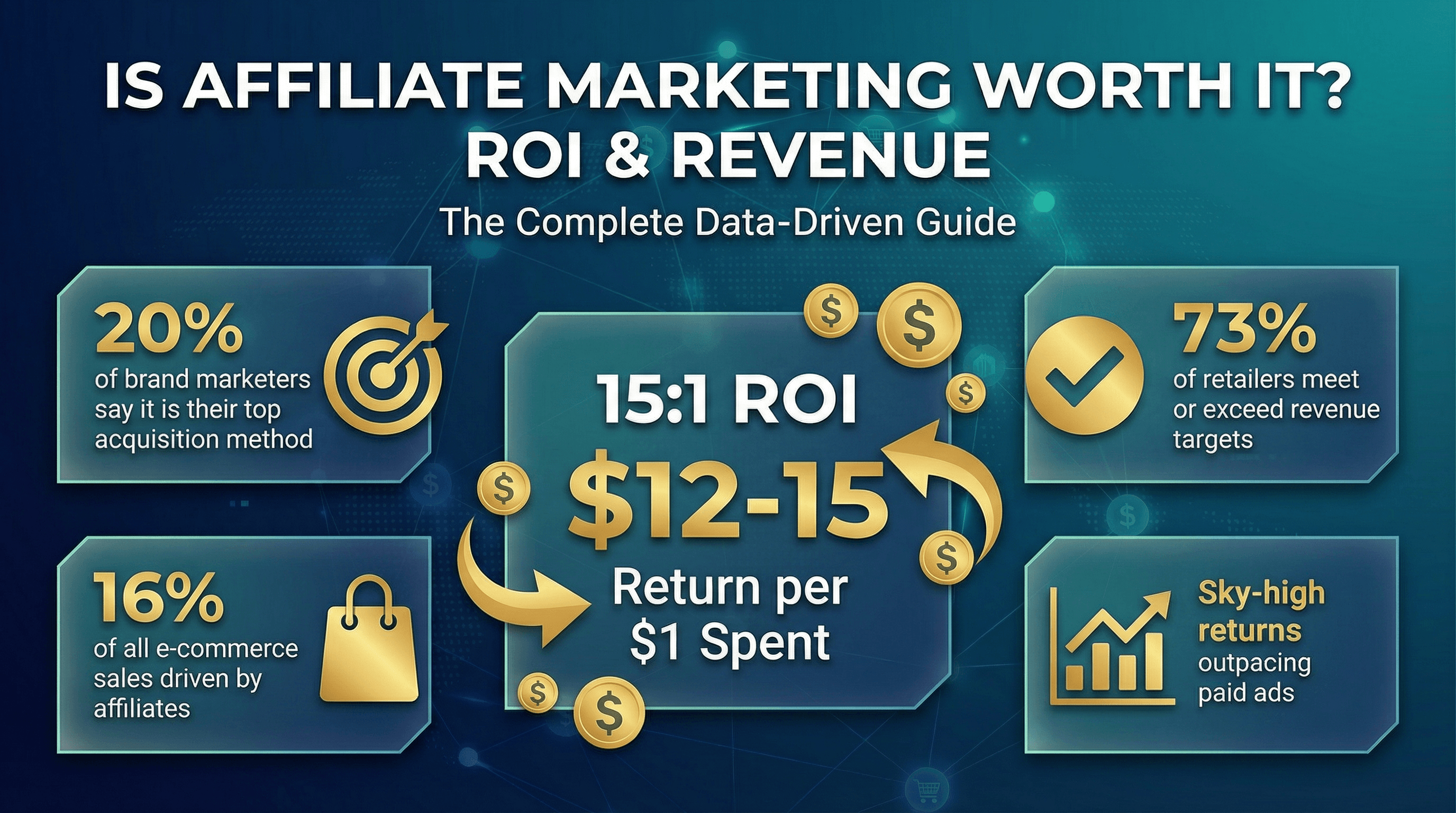
- ROI: On average, businesses earn on affiliate marketing. That’s a 12:1 or even 15:1 return—far outpacing most paid ad channels.
- Revenue impact: Affiliate programs are now the most important customer acquisition method for about , beating out search and display for those surveyed.
- Goal achievement: say their affiliate initiatives meet or exceed revenue targets.
- E-commerce share: in the US and Canada are driven by affiliate referrals.
In short, affiliate marketing is no longer a “nice to have”—it’s a core, high-ROI channel that brands rely on for measurable, performance-driven growth.
Who’s Using Affiliate Marketing? Adoption by Brands, Publishers, and Marketers
Affiliate marketing is everywhere in 2026:
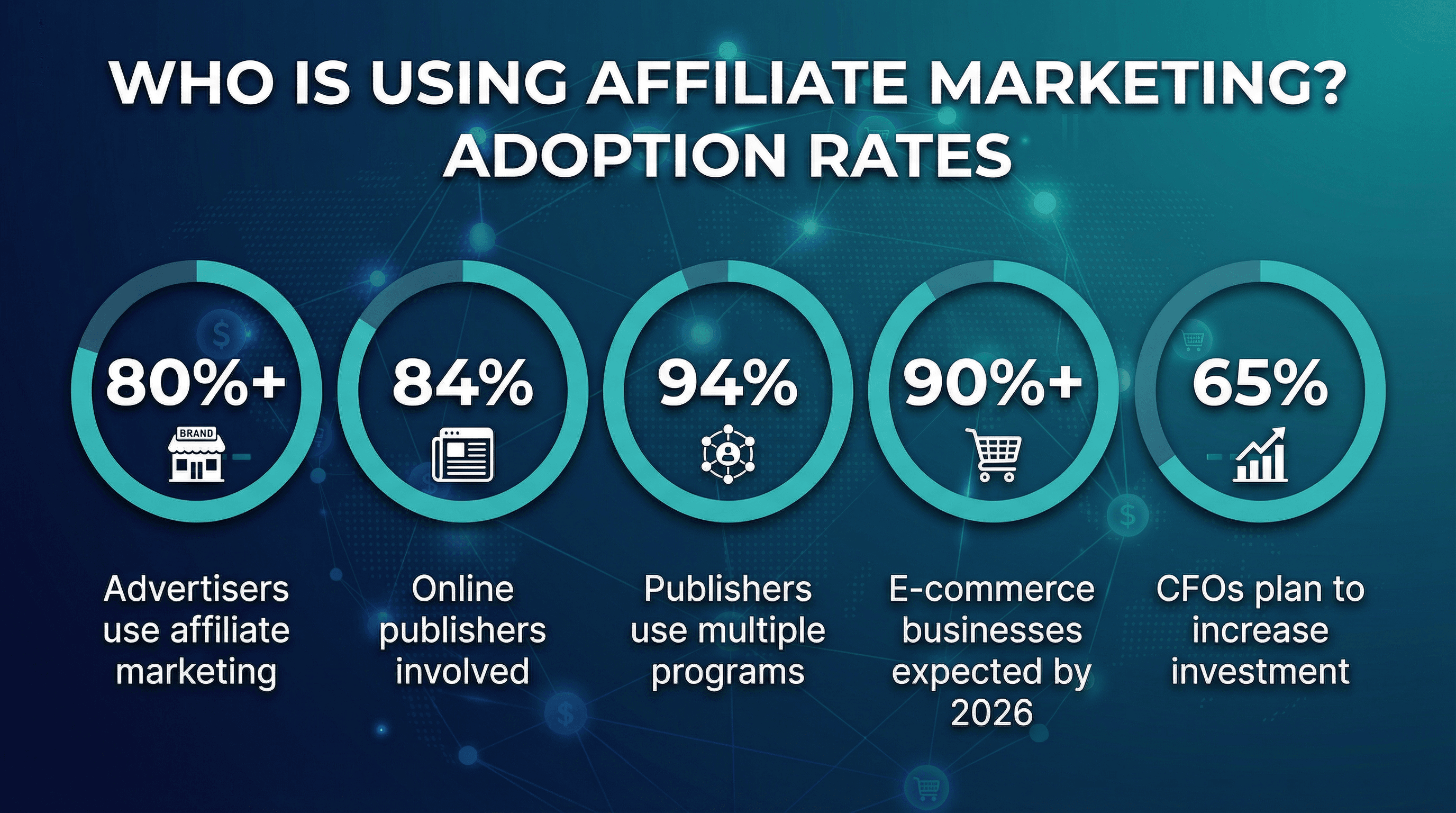
- Brands: Over use affiliate marketing to acquire customers and boost sales.
- Publishers: (from bloggers to media giants) are involved in affiliate programs.
- Multi-program participation: use multiple affiliate programs at once.
- Business size: More than are expected to run affiliate programs by 2026.
It’s not just the big brands, either—small businesses, SaaS startups, and even brick-and-mortar retailers are jumping on the affiliate bandwagon. And with , the channel’s future looks even brighter.
Affiliate Marketing by the Numbers: Top Niches and Earnings in 2026
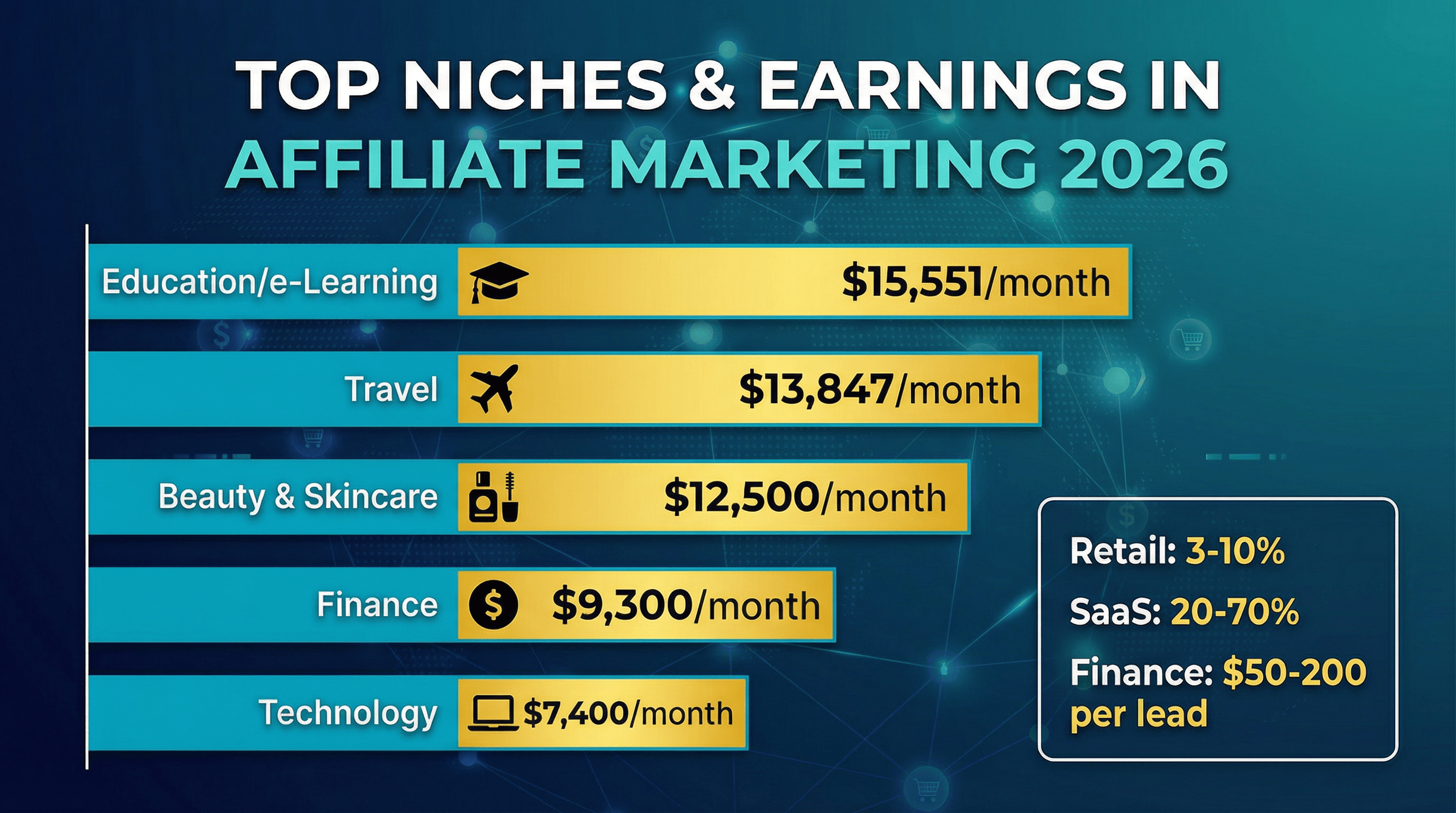
| Niche | Average Monthly Income |
|---|---|
| Education / e-Learning | $15,551 |
| Travel | $13,847 |
| Beauty & Skincare | $12,500 |
| Finance | $9,300 |
| Technology | $7,400 |
()
- Commission rates: Most retail programs pay per sale, while SaaS and software can offer (often recurring).
- Finance/Fintech: Affiliates can earn in some programs.
Retail and e-commerce account for , but high-ticket and subscription niches (like SaaS, finance, and e-learning) are where the biggest per-conversion payouts happen. The fastest-growing niches? E-learning, travel (as global mobility rebounds), and anything tied to digital transformation.
Affiliate Marketing Stats by Channel: Where Marketers Succeed
Affiliate marketers aren’t just sticking to blogs anymore. Here’s where the action is in 2026:
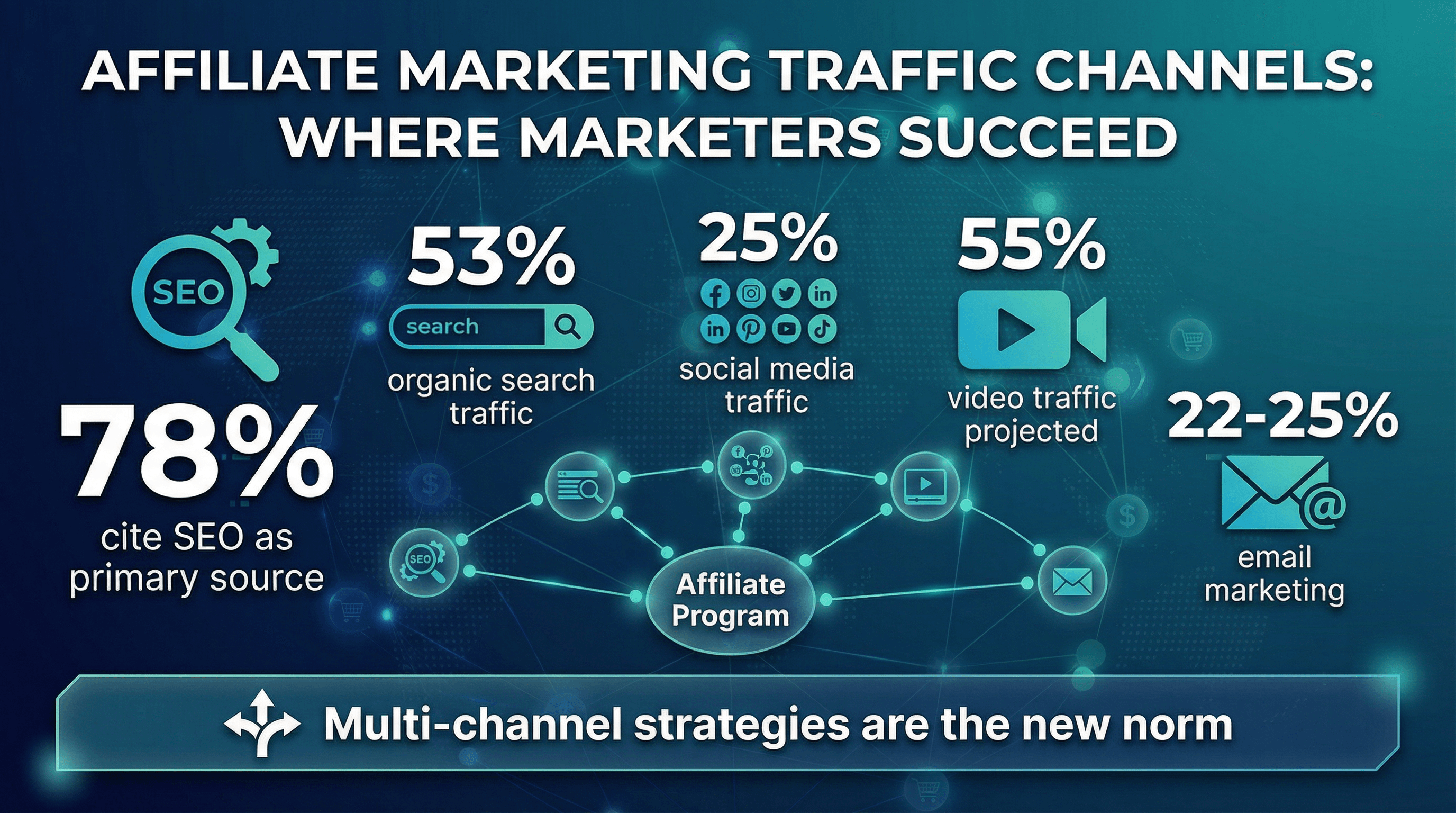
- SEO & content marketing: cite SEO as their primary traffic source; organic search drives .
- Social media: comes from social platforms; depend on social to drive traffic.
- Video content: is projected to come from video by 2025.
- Email marketing: Used by .
- Coupon/reward sites: Top coupon affiliates generate over annually.
The big shift? Multi-channel strategies are the new norm. Affiliates are blending SEO, social, email, and even paid ads to maximize reach and conversions.
Social Media & Affiliate Marketing: Platform-Specific Stats
Social media isn’t just for memes and cat videos—it’s a powerhouse for affiliate sales:
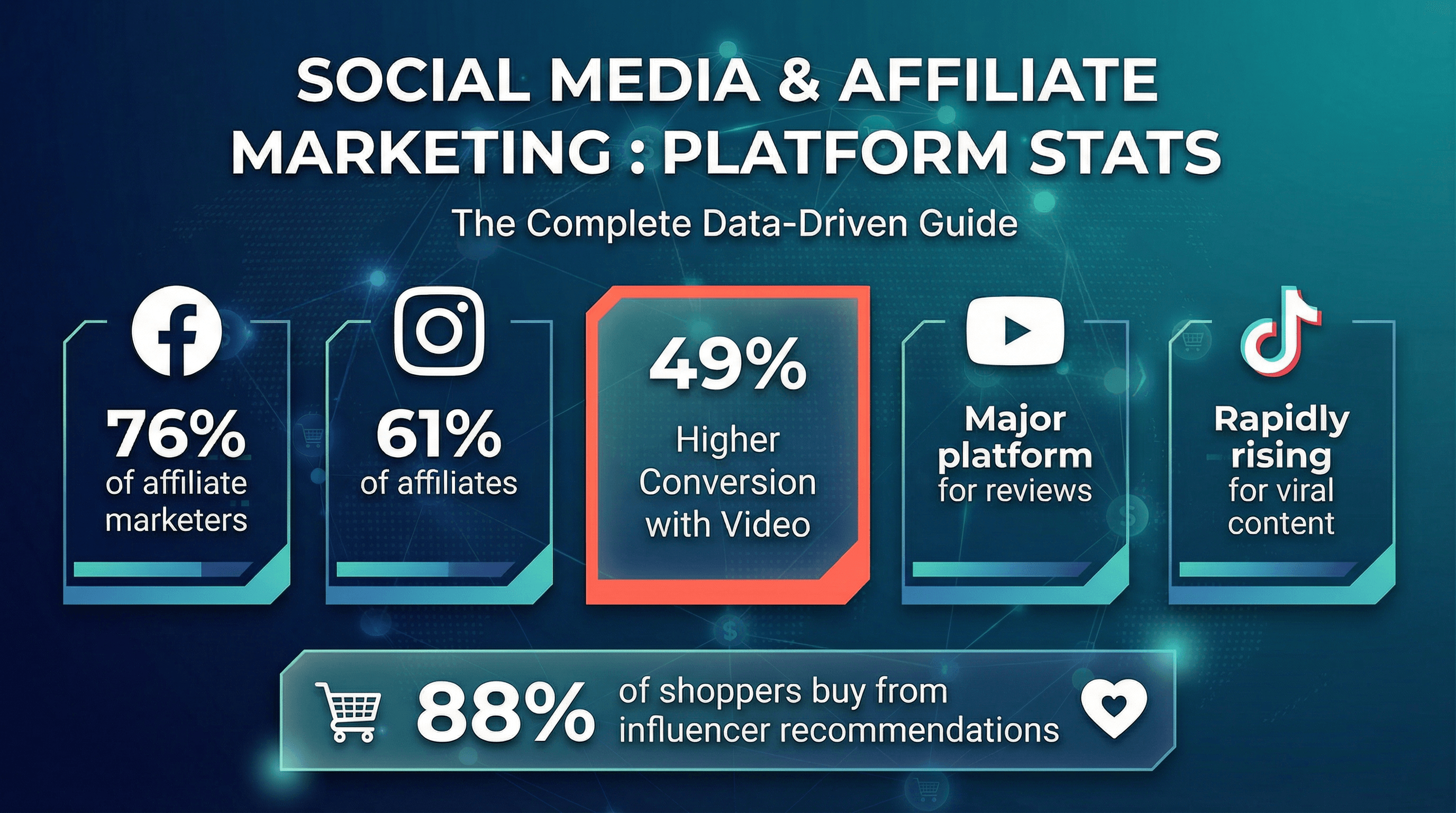
- Facebook: Used by .
- Instagram: use Instagram for affiliate campaigns.
- YouTube: Major platform for reviews, unboxings, and tutorials with affiliate links.
- TikTok: Rapidly rising, especially for short-form, viral product recommendations.
- Video conversion: Marketers using video see than those using text alone.
Influencer-driven affiliate marketing is huge: say they’ve bought something based on an influencer’s recommendation. That’s a lot of power packed into a swipe-up or a “link in bio.”
Affiliate Marketing Traffic Sources: SEO, Social, and Beyond
Where do affiliate marketers get their clicks?
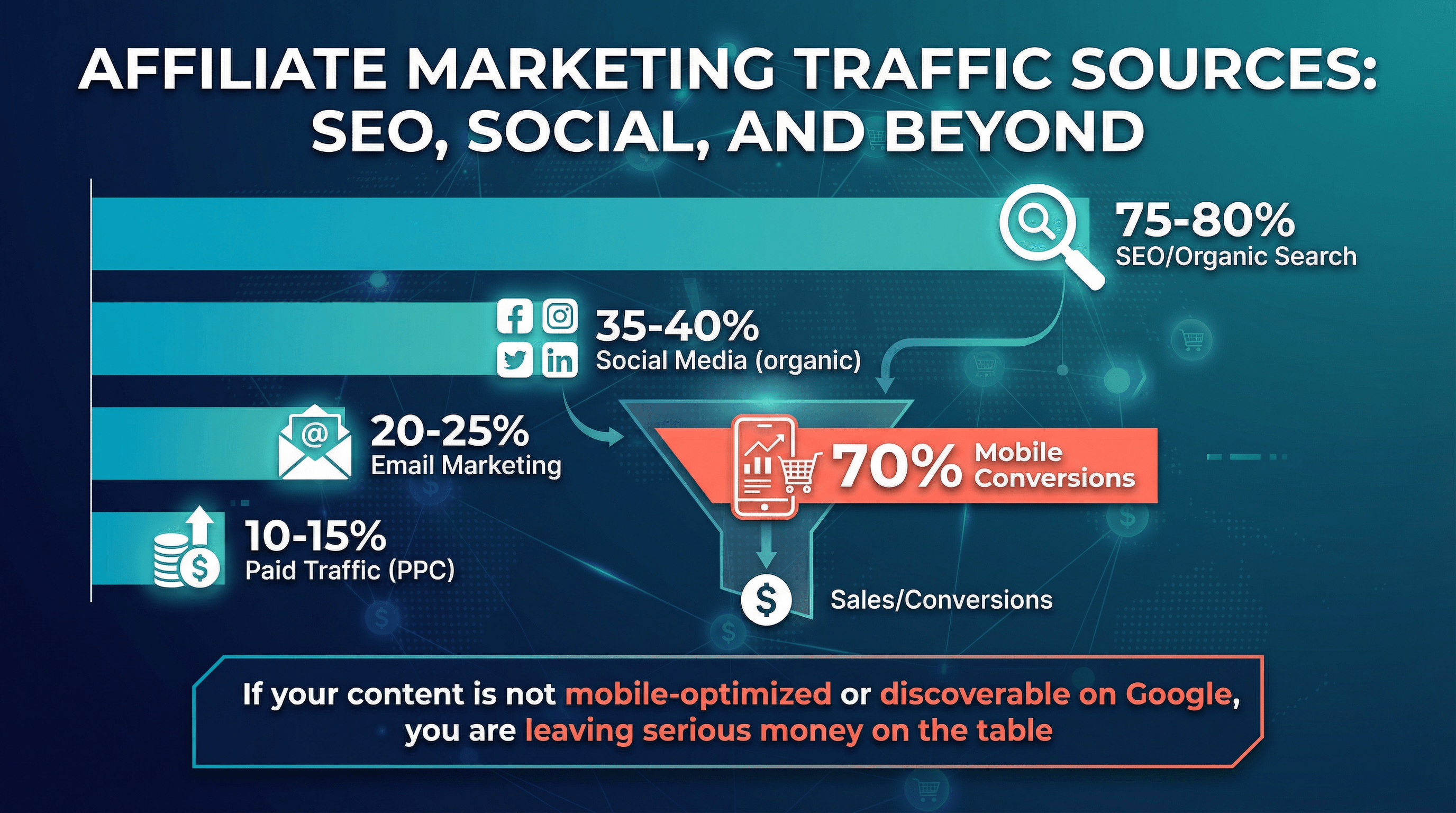
- SEO/Organic search: rely on SEO.
- Social media (organic): use organic social as a key source.
- Email: leverage email marketing.
- Paid traffic (PPC): Used by of affiliates, mainly in high-payout niches.
- Mobile traffic: now happen on mobile devices.
The takeaway? If your affiliate content isn’t mobile-optimized or discoverable on Google, you’re leaving serious money on the table.
Affiliate Marketer Demographics: Who’s Behind the Links?
Who are these affiliate marketers, anyway? Turns out, it’s a pretty diverse crowd:
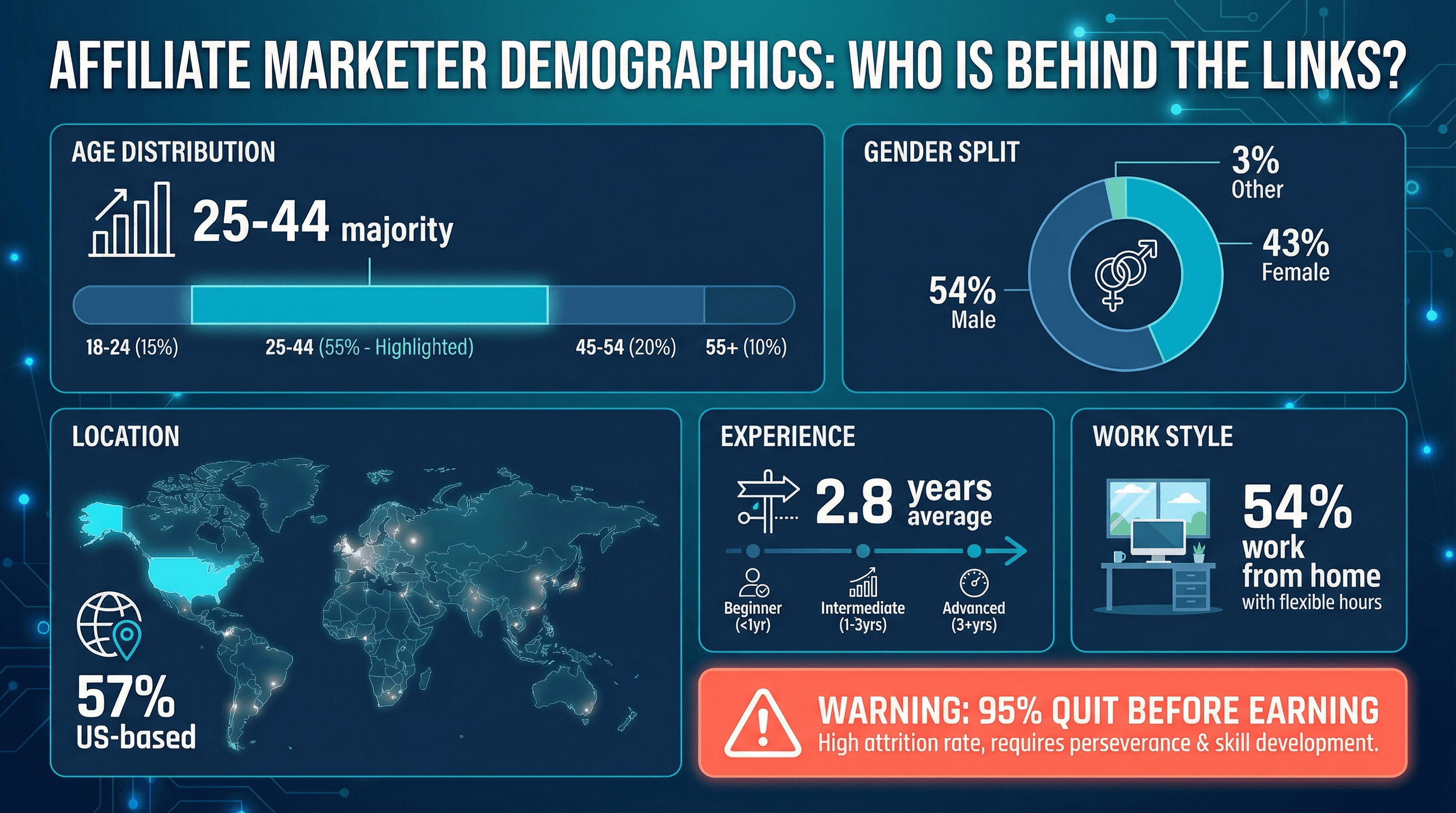
- Age: The majority are in the , with 32% between 35–44.
- Gender: .
- Location: , 10% in Canada, and the rest spread globally.
- Experience: The typical affiliate marketer has .
- Work environment: ; only 19% are office-based.
But here’s a reality check: before seeing real earnings. The field is open, but the learning curve is steep.
Consumer Behavior: How Shoppers Interact with Affiliate Content
Affiliate marketing works because it aligns with how people shop today:
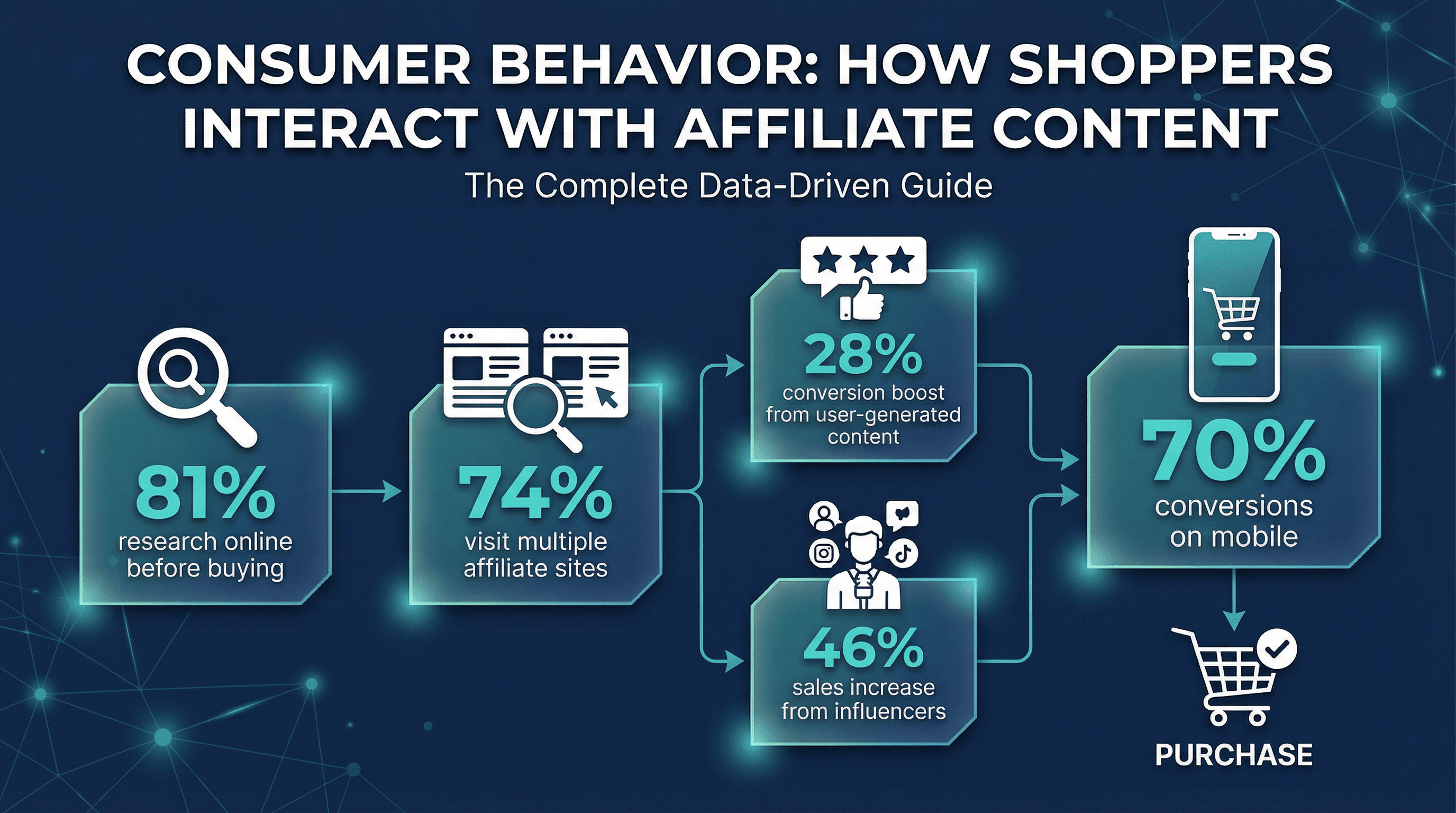
- 81% of consumers research online before buying ().
- 74% of US online shoppers visit multiple affiliate sites (reviews, coupons, etc.) before purchasing ().
- User-generated content and reviews can boost conversion rates by .
- Influencer campaigns can increase sales by up to .
- Mobile shopping: happen on mobile.
Trust and transparency matter: clear disclosures and authentic content win clicks (and sales).
Affiliate Marketing Challenges: What’s Holding Marketers Back?
It’s not all sunshine and commission checks. Here’s what keeps affiliate marketers up at night:
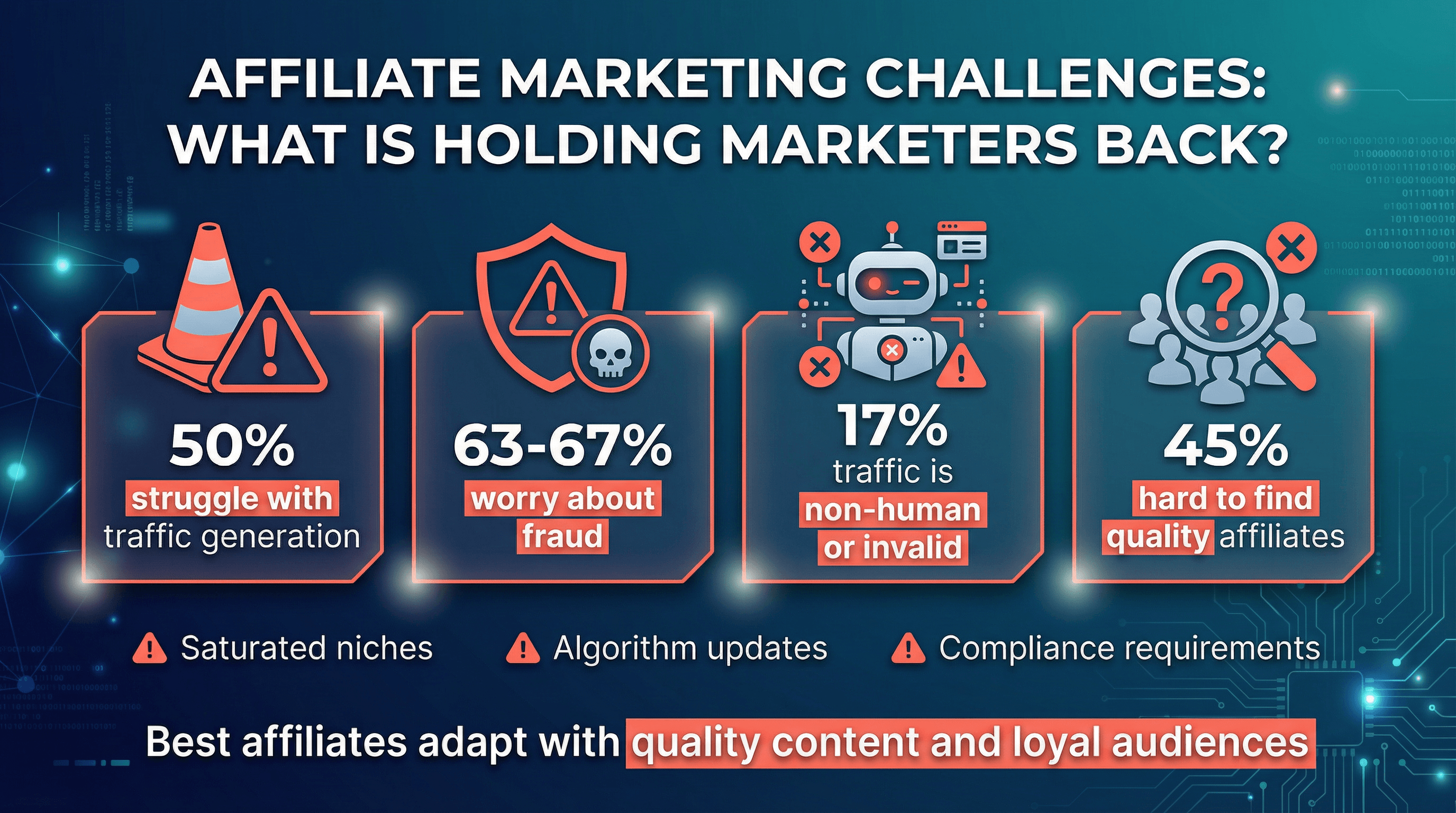
- Traffic generation: is their biggest challenge.
- Saturated niches: Crowded markets make it tough for newcomers to break in.
- Fraud: worry about affiliate fraud; up to can be non-human or invalid.
- Algorithm updates: Google’s changes can tank rankings overnight.
- Compliance: New FTC rules require clear disclosures; non-compliance can mean penalties.
- Recruiting quality affiliates: say it’s hard to find productive partners.
The best affiliates adapt by focusing on quality content, building loyal audiences, and staying ahead of tech and regulatory changes.
Affiliate Marketing Program Market Share: Who’s Leading in 2026?
The affiliate landscape is crowded, but a few giants stand out:
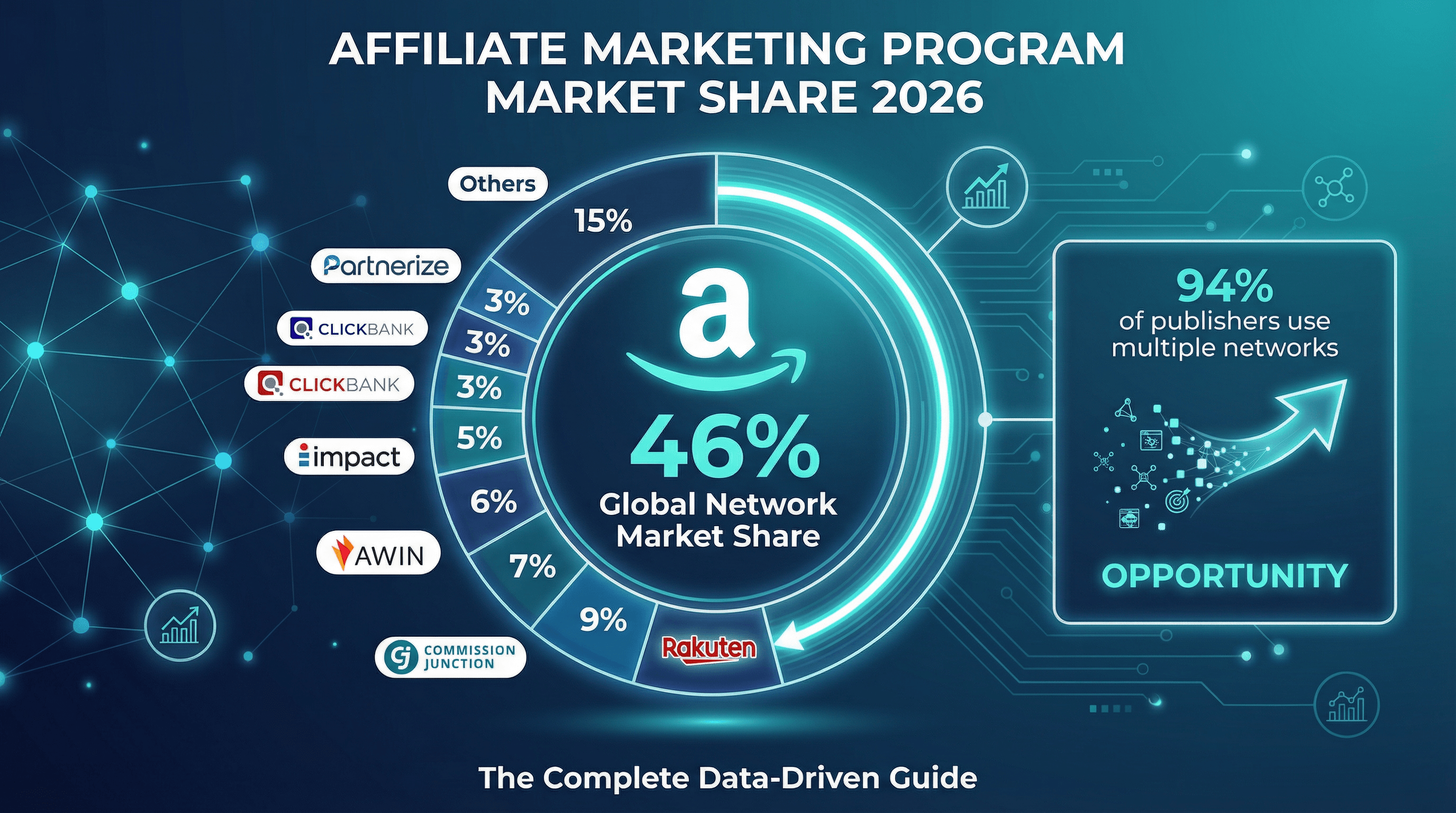
- Amazon Associates: Still the single largest program, with .
- Other major networks: CJ (Commission Junction), Rakuten, Awin (including ShareASale), Impact, ClickBank, and Partnerize all have significant footprints, but none individually exceed 10% share.
- Multi-network strategies: use multiple networks to diversify.
Fragmentation means opportunity: affiliates can cherry-pick the best programs and brands can reach broader audiences.
How Much Do Affiliate Marketers Make? Income Distribution in 2026
Let’s talk money. How much are affiliates really earning?
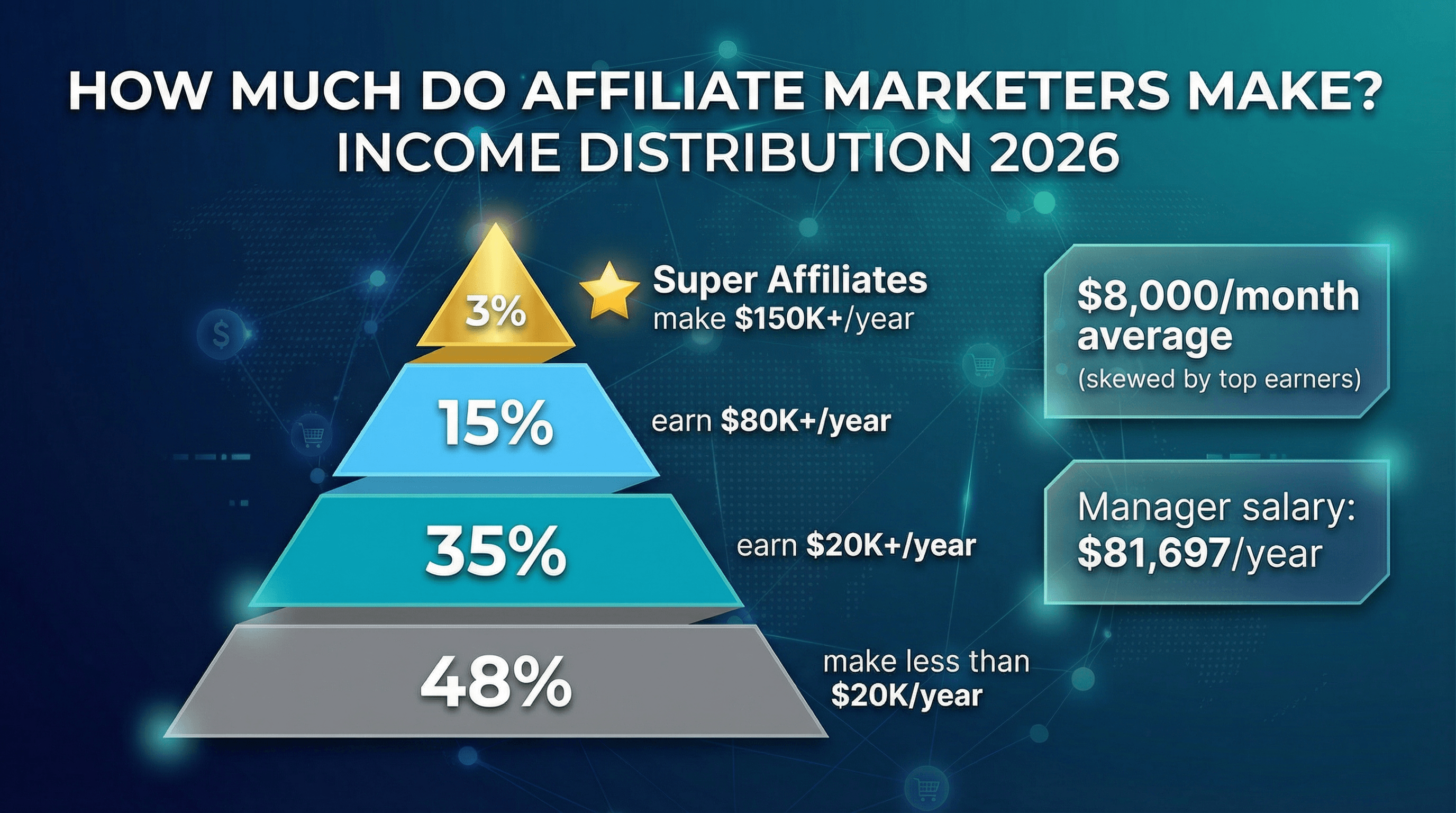
- Average monthly revenue: (skewed by top earners).
- Income brackets:
- 48% make less than $20,000/year ()
- 35% earn $20,000+/year ()
- 15% earn $80,000+/year
- 3% make $150,000+/year
- Top 1–5%: Six- and seven-figure incomes (the “super affiliates”).
- Manager salaries: The average affiliate marketing manager in the US earns .
Most affiliates start slow, but those who stick with it and scale up can achieve serious income.
The Role of AI in Affiliate Marketing: 2026 Adoption & Impact
If you’re not using AI in affiliate marketing by 2026, you’re basically bringing a butter knife to a sword fight.
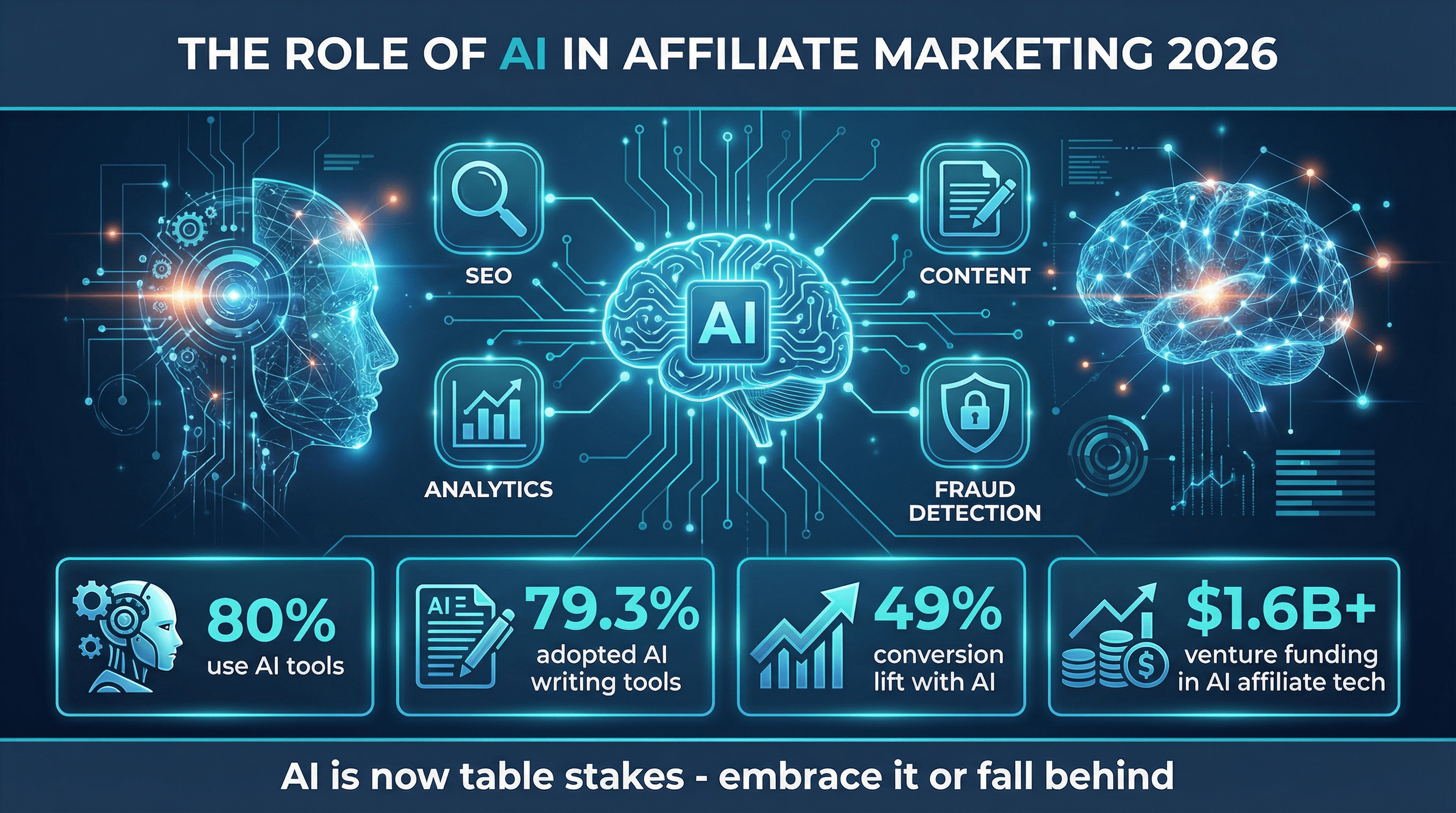
- AI adoption: use AI tools for content creation, SEO, or campaign analysis.
- AI content creation: have adopted AI-driven writing tools.
- Efficiency gains: Marketers using AI-enhanced video or content saw conversion lifts of nearly .
- AI-powered platforms: Over has flowed into AI-driven affiliate tech.
AI is everywhere: from writing blog posts to optimizing SEO, analyzing data, and even detecting fraud. The affiliates who embrace AI are outpacing the competition—sometimes literally overnight.
So, is affiliate marketing worth it in 2026? Here’s what the numbers tell us:
- Affiliate marketing is bigger and more mainstream than ever—if you’re not leveraging it, you’re missing out.
- ROI is sky-high (up to 15:1), and the share of e-commerce sales driven by affiliates keeps climbing.
- Mobile and social are non-negotiable—optimize for mobile and meet your audience where they are (Instagram, YouTube, TikTok).
- AI is now table stakes—embrace it or risk falling behind.
- Competition is fierce, but opportunity abounds—especially in high-growth niches like e-learning, travel, and finance.
- Success takes work—most newcomers drop out, but those who treat affiliate marketing as a business (not a “get rich quick” scheme) can build real, lasting income streams.
For brands, affiliate marketing should be a core part of your marketing mix. For creators and marketers, it’s a proven way to monetize your audience, provided you’re ready to learn, adapt, and invest in quality content and relationships.
Methodology & Sources
All statistics in this post were gathered from the latest (2024–2026) industry reports, surveys, and trusted data providers, including:
All data points are cited inline for easy verification. For more deep dives into digital marketing, automation, and AI-powered growth, check out the .
Curious how AI is transforming other parts of digital business? See how are helping marketers and e-commerce teams automate data collection, competitive research, and more. Or explore our latest guides on and .